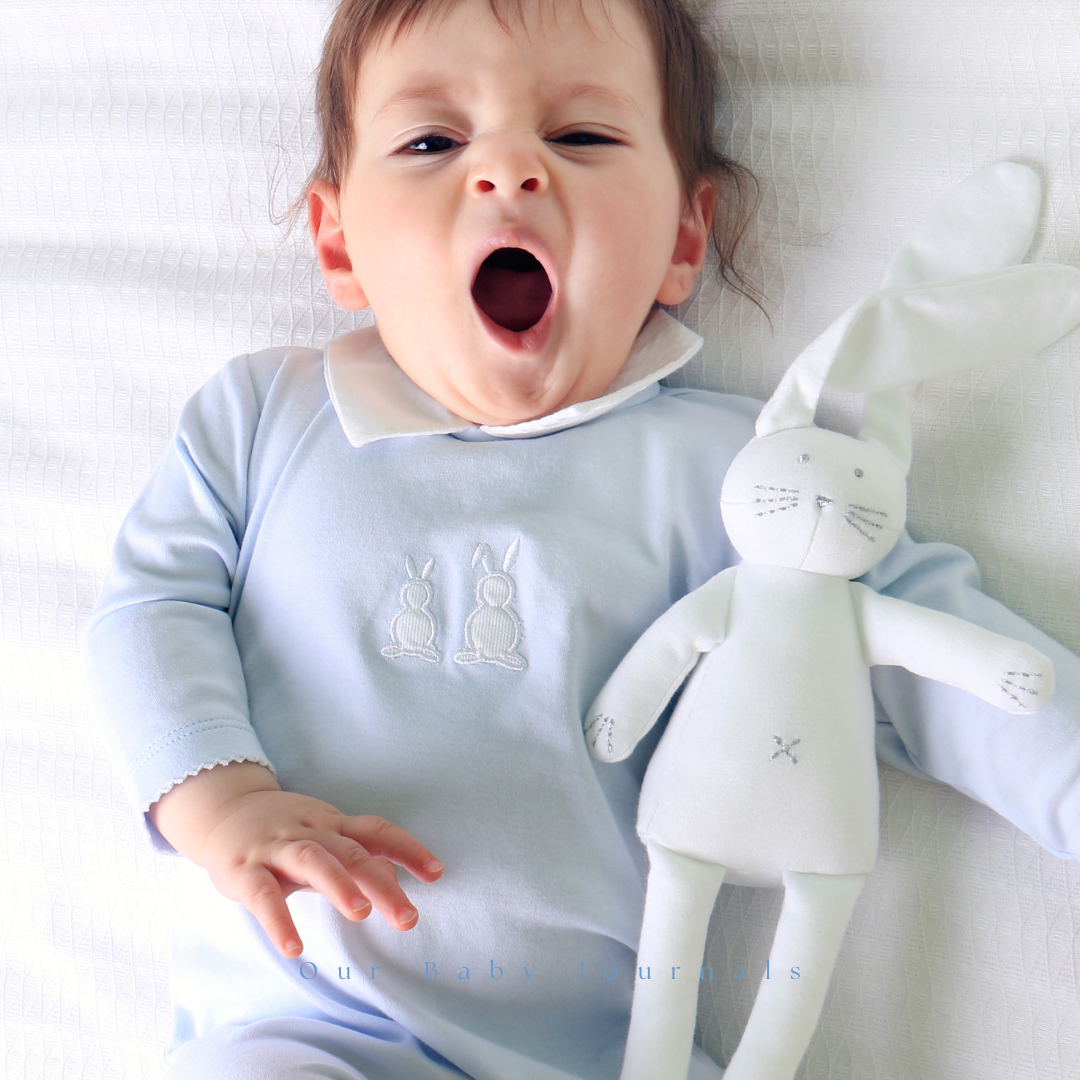A baby’s sleep cycle is different from that of an adult. It is shorter, lasting between 50-60 minutes or less. Sleep is divided into 50% active (REM) sleep and 50% quiet (non-REM) sleep. During active sleep a baby is more likely to wake up. They take shallow breaths and twitch their arms and legs. Their eyes can flutter under their eyelids. About halfway through a sleep cycle, your baby will change to quiet sleep. Their breathing will become slower and more rhythmic. They will move less and there will be no eyelid fluttering. After quiet sleep, your baby will either wake up or return to active sleep.
Sleep is important for your child in the early months and years. It assists brain development. Babies need sleep so that they can assimilate everything they have learned and experienced. Blood flow to the brain nearly doubles during active sleep. When a baby’s brain is growing and developing the most is also the time when they have more active sleep. Premature babies spend even more of their sleep time in active sleep, perhaps up to 90%. As baby gets older active sleep comprises about 30% of sleep.
From three to six months, most babies begin to settle into a better sleep pattern. They are more wakeful for longer stretches during the day and may sleep for up to five to eight hours at a time at night. Between three to six months, they can continue to wake once or twice for feeds at night.
After six months you will notice that they now have less active sleep and more quiet sleep. Managing the night-time waking is important now as baby has learned new skills. They acquire the ability to stay awake while at the same time they are learning exciting new skills such as sitting up and crawling. This combination of being able to do exciting new things and being able to stay awake can mean your baby might wake more often during the night and be more reluctant to go back to sleep. They also figure out object permanence. This is the ability to understand that an object can exist even if they cannot see it. As a result of this, when they do wake at night, they may call out for you.
How sleep happens.
There are two hormones that control sleep and waking – Melatonin and Cortisol. Melatonin is known as the sleep hormone, and it peaks in the bloodstream just before we go to sleep. It is known as the “sleep trigger”. Cortisol is the hormone that wakes us up. It is also the stress hormone. Cortisol levels are at their lowest level about 3-5 hours after we fall asleep. They then rise slowly through the night – to peak around 8am. How these 2 hormones are balanced are critical to good sleep.
To ensure your child has good nights sleep you want melatonin to be high and cortisol to be low at bedtime. During the night, melatonin will decrease, and cortisol will rise. At a certain point, the hormone levels cross – and the cortisol level is higher. This is the point at which your child wakes up. The higher the cortisol levels at bedtime, the sooner this crossover will happen. So why would your child have higher cortisol levels at bedtime?
The main reason a child will have a high cortisol level at bedtime is stress. One of the main reasons cortisol levels can be too high, is from sleep deprivation. Sleep deprivation leads to stress – which leads to increased cortisol. If your child does not have adequate naps during the day, they will be overtired by bedtime. Their cortisol levels will be raised and as a result, their night time sleep will be poor.
Many parents will think that putting a child to bed a little later will mean that they will sleep longer the following morning. In fact, the opposite is true, they need to go to sleep earlier, and have the proper number of naps through the day, to sleep longer at night.
What can you do to reduce your child’s cortisol levels at bedtime?
- Good quality naps during the day.
- A consistent bed time and bedtime routine allows your child to recognise their sleep ques and begin their wind down.
- Dim the lights as bedtime approaches.
- TV and computer screens decrease melatonin and increase cortisol so turn them off at least an hour before bedtime.
The bedtime routine.
Creating consistent routines for your child will help bring order to what can be a very chaotic world. A bedtime routine may consist of a bath, a massage, a story, a feed and off to sleep. Keep the room dim and, as the routine progresses, soften your voice and talk less. Have a few phrases that you repeat such as “night, night, we love you” or “sleepy time now” – whatever works for you. Have a routine for daytime naps too. This can be shorter but will have similar elements. It may include closing the curtains, placing baby in his crib, cuddles and a few sleepy phrases such as “sleep well, we love you”.

